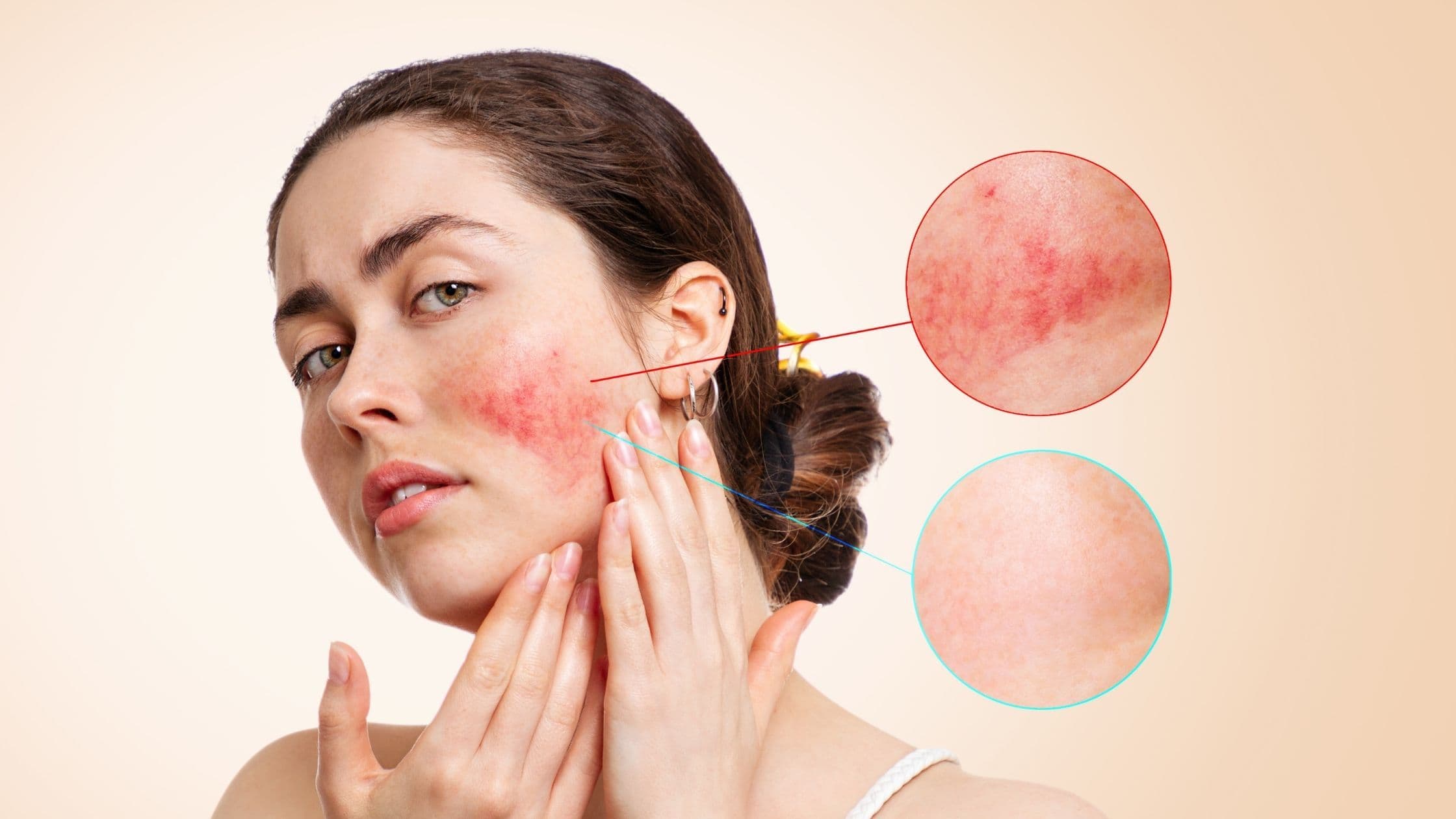A Comprehensive Look at Rosacea Symptoms
Rosacea, a chronic inflammatory skin condition, often manifests as facial redness and flushing. But beyond the telltale blush, rosacea can present a diverse range of symptoms, varying in severity and presentation from person to person. Here, we delve into the extensive symptoms of rosacea, empowering you to recognize the signs and seek appropriate diagnosis and treatment.

Facial Vascular Changes:
- Flushing: One of the earliest signs of rosacea, flushing involves episodes of intense facial redness that can come and go. It might feel like your face is burning or throbbing.
- Persistent Redness: Over time, the flushing can evolve into persistent facial redness, resembling a sunburn that doesn't fade. This can affect the entire face or specific areas like the cheeks, nose, and forehead.
- Visible Blood Vessels: Tiny dilated blood vessels, known as telangiectasia, become visible on the surface of the skin, particularly on the nose and cheeks. These can appear as thin red lines or spiderweb patterns.
Bumps and Pimples:
- Papules and Pustules: Small, red bumps (papules) or pus-filled bumps (pustules) can develop on the central area of the face, sometimes resembling acne. Unlike acne, rosacea doesn't involve blackheads.
- Inflamed Bumps: These bumps might be tender to the touch and may cause a burning or stinging sensation. Scratching or picking at them can worsen inflammation and potentially lead to scarring.
Eye Involvement:
- Ocular Rosacea: This affects up to half of people with rosacea and can cause a variety of eye problems, including redness, dryness, irritation, burning, stinging, and a gritty sensation. In severe cases, it can damage the cornea and impair vision.
- Blepharitis: Inflammation of the eyelids, causing redness, crusting, and eyelash loss, can occur in rosacea.
- Styes: These are small, red, tender bumps on the eyelid margin, similar to a pimple, and can be more frequent in people with rosacea.
Other Potential Symptoms:
- Plaques: Raised, red patches can develop on the skin, particularly on the forehead or cheeks. These might be smooth or have a bumpy texture.
- Burning or Stinging: A burning or stinging sensation can be present on the face, especially in the central areas.
- Swollen Nose (Rhinophyma): In severe, untreated rosacea, particularly in men, the nose can become thickened and bulbous, a condition known as rhinophyma.
- Dry, Rough Skin: The affected facial skin might feel dry, rough, and scaly.
Variations by Subtype:
Rosacea can be categorized into four subtypes, each with a slightly different presentation:
- Erythematotelangiectatic Rosacea (ETR): This subtype primarily involves flushing, persistent redness, and visible blood vessels.
- Papulopustular Rosacea: This subtype is characterized by bumps and pimples on the face, similar to acne but without blackheads.
- Rosacea Conglobata: A rare and severe form with large, inflamed bumps on the face.
- Ocular Rosacea: This subtype primarily affects the eyes, causing redness, dryness, and irritation.
It's Important to Note: Not everyone with rosacea experiences all of these symptoms. The presentation can vary greatly from person to person. If you experience any signs suggestive of rosacea, it's crucial to consult a dermatologist for proper diagnosis and treatment. Early intervention can help manage symptoms, prevent complications, and promote long-term skin health.